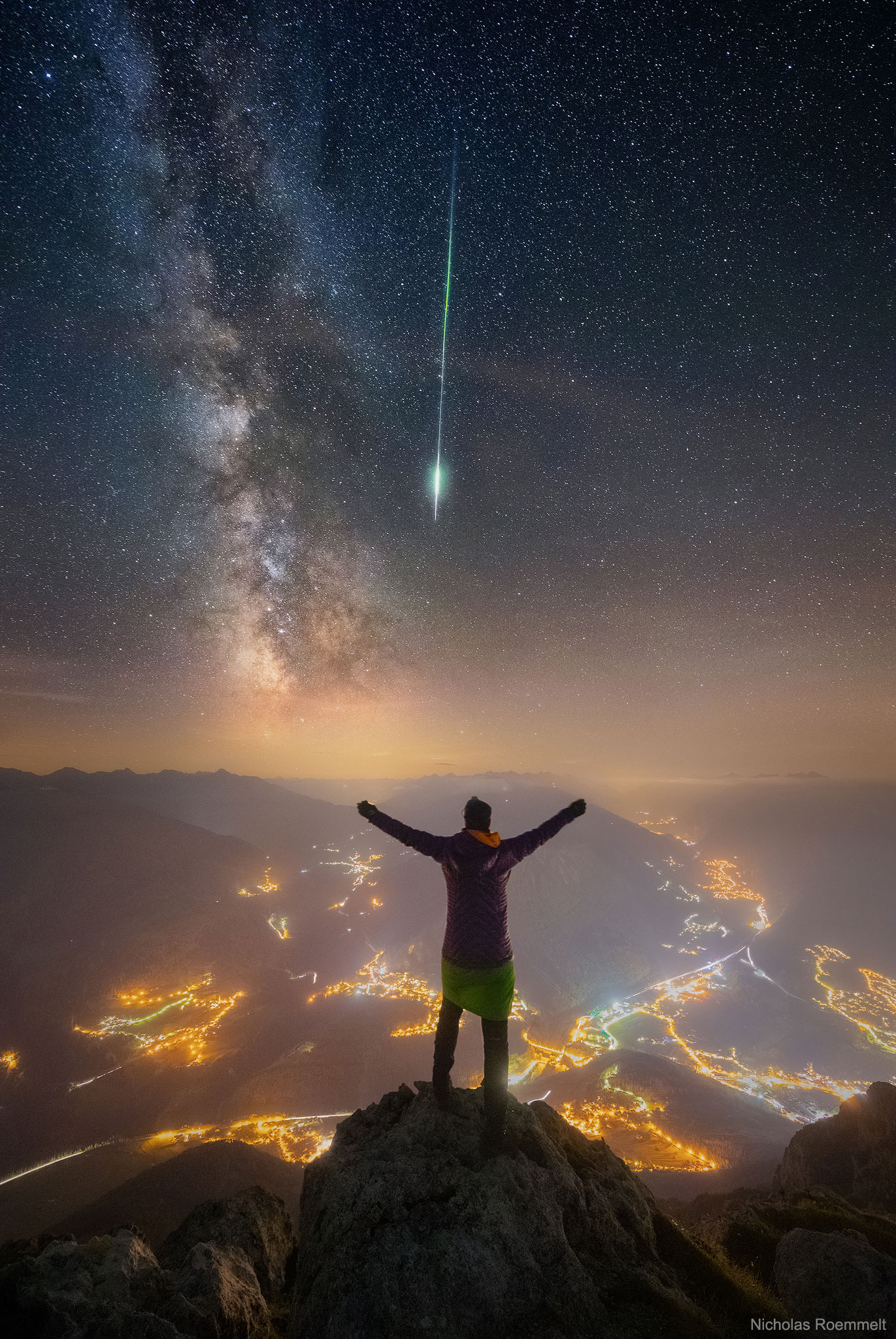An Austrian astrophotographer managed to photograph simultaneously a meteor, the Milky Way galaxy and the Alps during the Perseid meteor shower – a celestial phenomenon that has already begun. Nicholas Roemmelt climbed the mountain to take his picture, which is a combination of different exposures taken from one place without moving the camera. The most difficult thing was to photograph a meteor.

“We saw a lot of falling stars that night on this mountain, but they often fell in the wrong direction. Therefore, the camera continuously took one picture after another. I desperately wanted to get this composition, but the falling stars did not fall into the planned frame,” says Nicholas.
That was until a huge meteor came into Roemmelt’s field of vision, and even in an ideal place – right near the core of the Milky Way. This unique case allowed the astrophotographer to get an amazing image.
The second problem was that the desired image was almost never obtained due to bad weather on the Tyrolean peaks. “The peaks were often covered with clouds, and the various weather forecasts completely contradicted each other,” he explains.
However, Nicholas still climbed Mount Tschirgant, and suddenly the clouds mercifully dispersed.
New life of photography
Nicholas took this picture in 2018. But on July 16, 2023, the photo was published on the astronomy portal NASA Astronomy Picture of the Day, which gave the photo a new life.
The image, of course, is compositional, since it is almost impossible to capture all the elements correctly in one frame. But everything depicted in the picture was real, and Roemmelt is keen to emphasize that this is not a “fake” composition.
“The foreground, the Milky Way and the falling star during the Perseids were mounted together in one image,” he explains. For shooting, Roemmelt used a Canon 1DX Mark II with a Sigma 14mm f/1.8 lens.
The Perseid meteor shower of 2023 began on July 14 and would last until August 24. It is expected that its peak will be in the pre-dawn hours of Sunday, August 13.
Earlier we reported on how the wedding couple took a photo against the background of the launch of the SpaceX rocket.
Follow us on Twitter to get the most interesting space news in time
https://twitter.com/ust_magazine

